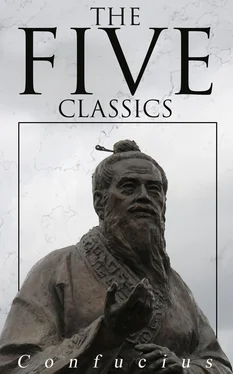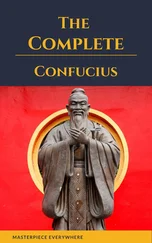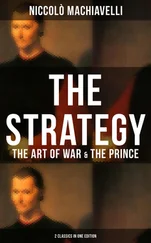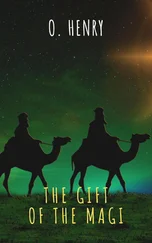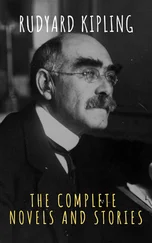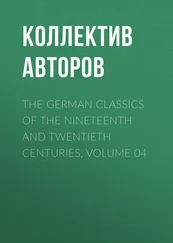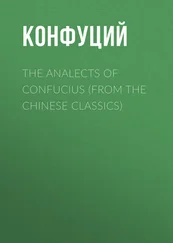The web-footed goose is not suited for taking hold on the branches; but on flat branches it can rest. Line 4, weak, but in an even place, does not promise a good auspice for its subject; but it is the first line in the trigram of humility, and it is concluded that he will not fall into error.
Line 5 is a strong line in the ruler's seat; and yet it appears here as the symbol of a wife. Somehow its subject has been at variance with, and kept in disgrace by, calumniating enemies such as the plunderers of paragraph 3; but things come right in the end. The wife, childless for three years, becomes at last a mother; and there is good fortune.
The subject of line 6 has reached the top of the hexagram. There is no more advance for him; and he has no correlate. But he may still do some good work for the state, and verify the auspice derived from the ornamental plumes of the geese.
Table of Contents

Kwei Mei indicates that (under the conditions which it denotes) action will be evil, and in no wise advantageous.
1. The first line, undivided, shows the younger sister married off in a position ancillary to the real wife. (It suggests the idea of) a person lame on one leg who yet manages to tramp along. Going forward will be fortunate.
2. The second line, undivided, shows her blind of one eye, and yet able to see. There will be advantage in her maintaining the firm correctness of a solitary widow.
3. The third line, divided, shows the younger sister who was to be married off in a mean position. She returns and accepts an ancillary position.
4. The fourth line, undivided, shows the younger sister who is to be married off protracting the time. She may be late in being married, but the time will come.
5. The fifth line, divided, reminds us of the marrying of the younger sister of (king) Tî-yî, when the sleeves of her the princess were not equal to those of the (still) younger sister who accompanied her in an inferior capacity. (The case suggests the thought of) the moon almost full. There will be good fortune.
6. The sixth line, divided, shows the young lady bearing the basket, but without anything in it, and the gentleman slaughtering the sheep, but without blood flowing from it. There will be no advantage in any way.
54.Mei Kwei is a common way of saying that a young lady is married, or, literally, 'is going home.' If the order of the characters be reversed, the verb kwei will be transitive, and the phrase will signify 'the marrying away of a daughter,' or 'the giving the young lady in marriage.' In the name of this hexagram, Kwei is used with this transitive force. But Mei means 'a younger sister,' and not merely a young lady or a daughter. Kwei Mei might be equivalent to our 'giving in marriage;' but we shall find p. 183 that the special term has a special appropriateness. The Thwan makes the hexagram give a bad auspice concerning its subject; and for this the following reasons are given:--According to Win's symbolism of the trigrams, Tui, the lower trigram here, denotes the youngest daughter, and K ăn, the upper trigram, the oldest son. And as the action of the hexagram begins with that of the lower trigram, we have in the figure two violations of propriety. First, the marriage represented is initiated by the lady and her friends. She goes to her future home instead of the bridegroom coming to fetch her. Second, the parties are unequally matched. There ought not to be such disparity of age between them. Another reason assigned for the bad auspice is that lines 2, 3, 4, and 5 are all in places not suited to them, quite different from the corresponding lines in the preceding hexagram.
Is then such a marriage as the above, or marriage in general, the theme of the hexagram? I think not. The marriage comes in, as in the preceding essay, by way of illustration. With all the abuses belonging to it as an institution of his country, as will immediately appear, the writer acknowledged it without saying a word in deprecation or correction of those abuses; but from the case he selected he wanted to set forth some principles which should obtain in the relation between a ruler and his ministers. This view is insisted on in Wan King's 'New Collection of Comments on the Yî (A. D. 1686).'
A feudal prince was said to marry nine ladies at once. The principal of them was the bride who was to be the proper wife, and she was attended by two others, virgins from her father's harem; a cousin, and a half-sister, a daughter of her father by another mother of inferior rank. Under line 1 the younger sister p. 183 of the hexagram appears in the inferior position of this half-sister. But the line is strong, indicative in a female of firm virtue. The mean condition and its duties are to be deplored, and give the auspice of lameness; but notwithstanding, the secondary wife will in a measure discharge her service. There will be good fortune. Notwithstanding apparent disadvantages, an able officer may do his ruler good service.
Line 2 is strong, and in the centre. The proper correlate is 5, which, however, is weak, and in the place of a strong line. With such a correlate, the able lady in 2 cannot do much in the discharge of her proper work. But if she think only of her husband, like the widow who will die rather than marry again, such devotion will have its effect and its reward. Though blind of one eye, she yet manages to see. And so devoted loyalty in an officer will compensate for many disadvantages.
Line 3 is weak, where it should be strong; and the attribute of pleased satisfaction belonging to Tui culminates in its subject. She turns out to be of so mean a character and such a slave of passion that no one will marry her. She returns and accepts the position of a concubine.
Line 4 is strong, where it should be weak; but in the case of a female the indication is not bad. The subject of the line, however, is in no haste. She waits, and the good time will come.
King Tî-yî has been already mentioned under the fifth line of hexagram 11, and in connexion with some regulation which he made about the marriage of daughters of the royal house. His sister here is honourably mentioned, so as to suggest that the adorning which she preferred was 'the ornament of the hidden man of the heart.' The comparison of her to 'the moon almost full' I am ready to hail as an instance where the duke of K âu is for once poetical. Kh ăng-ȝze, however, did not see poetry, but a symbol in it. 'The moon is not full,' he says, 'but only nearly full. A wife ought not to eclipse her husband!' However, the sister of Tî-yî gets happily married, as she deserved to do, being represented by the line in the place of honour, having its proper correlate in 2.
Line 6 is weak, at the top of the hexagram, and without a proper correlate. Hence its auspice is evil. The marriage-contract is broken, according to K û Hsî, and does not take effect. The p. 185 parties mentioned in the paragraph appear engaged in the temple, offering or sacrificing to the spirits of their ancestors. But the woman's basket which should contain her offerings (The Shih, I, ii, ode 4) is empty, and the man attempts to perform his part in slaying the victim (The Shih, II, vi, ode 6. 5) without effect.
Table of Contents

Făng intimates progress and development. When a king has reached the point (which the name denotes) there is no occasion to be anxious (through fear of a change). Let him be as the sun at noon.
Читать дальше
